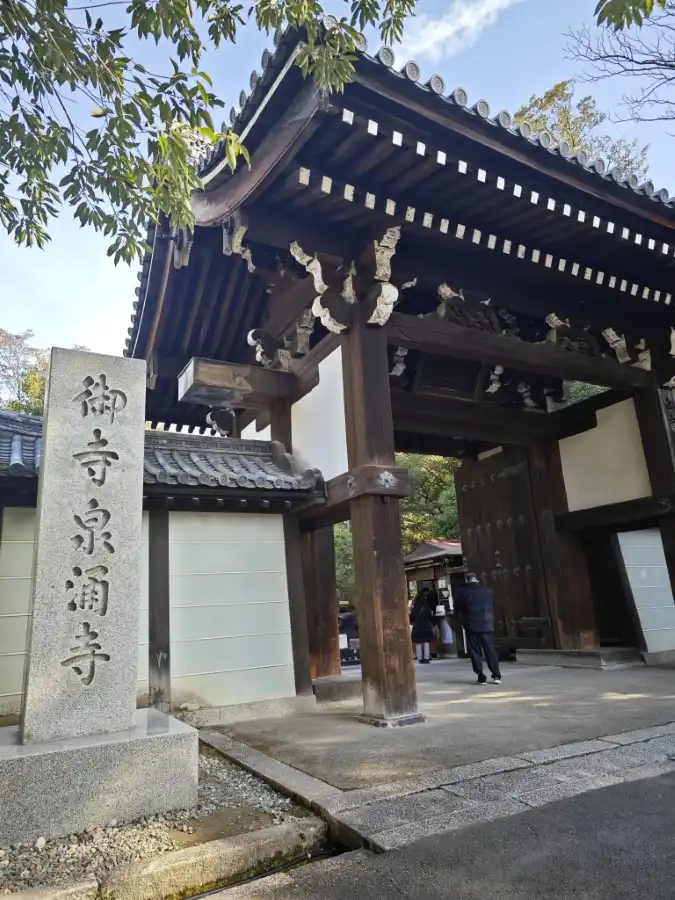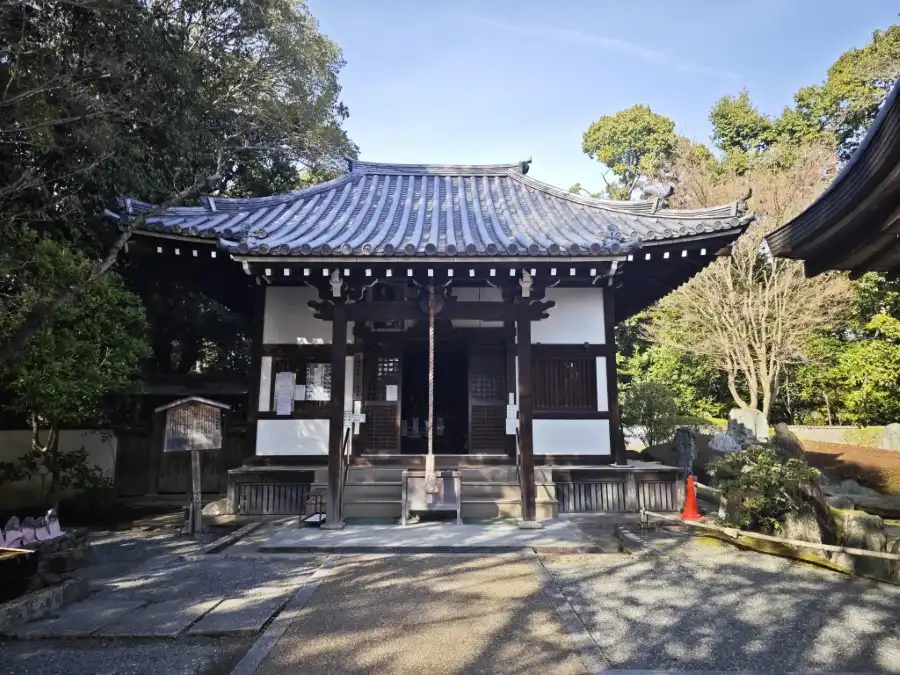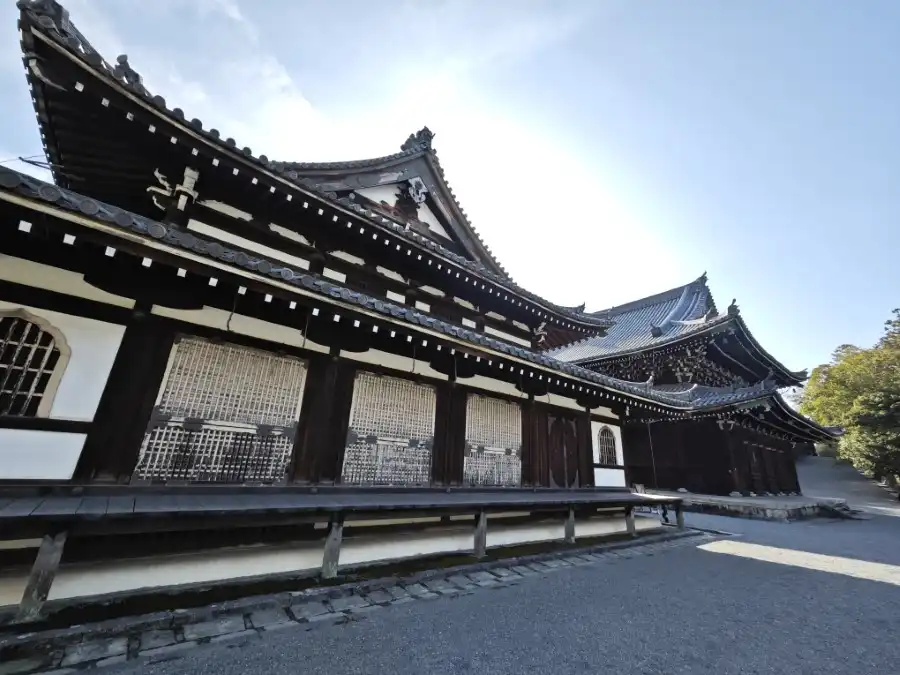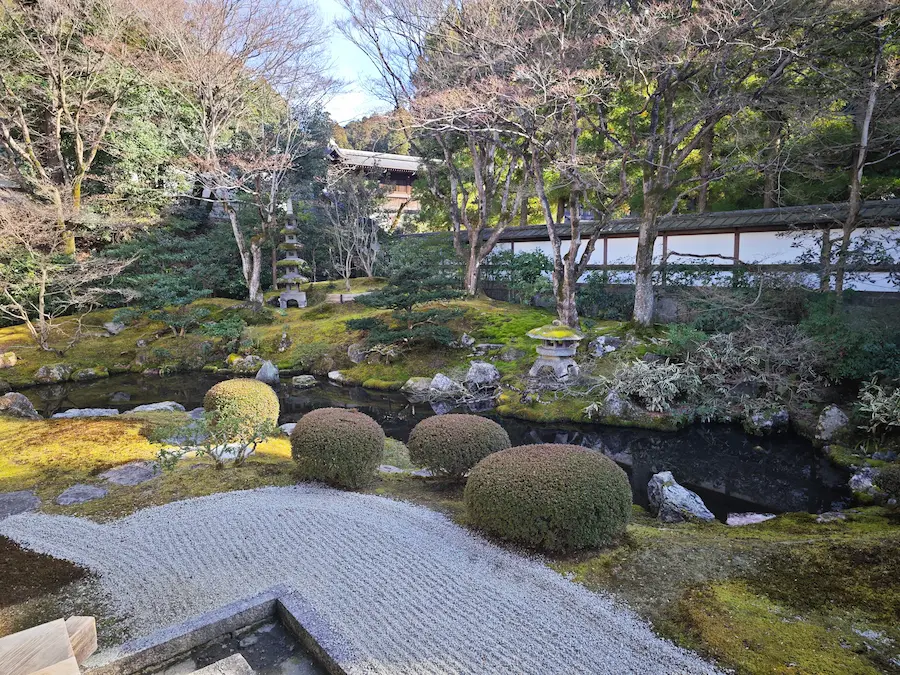Nestled in the serene Higashiyama district of Kyoto, Sennyuji Temple, known as “Mitera,” offers a tranquil retreat. Founded in the 9th century, this temple is a significant site for cultural heritage and historical art.
This temple is the head temple of Sennyuji Sect of Shingon School of buddhism.
Historical Significance
Sennyuji has deep imperial connections, serving as a prayer site for Japan’s imperial family. Its history spans over a thousand years, making it a key location for understanding Japan’s cultural and religious heritage.
Cultural Treasures
Daimon (Main Gate)
The Daimon gate stands at the highest point of the temple complex. This gate was moved from the Kyoto Imperial Palace. It is an important cultural property.

Yokihi Kannondo (Empress Yank Kwei Fei Avalokiteśvara Hall)
On the left side of the main gate is the “Yang Kwei-Hui Hall.” This hall enshrines a statue of Avalokiteśvara, an important cultural property. This wooden statue was imported from the Southern Song Dynasty of China in 1230.
Because of its beauty, this wooden structure gave rise to the legend that Emperor Xuanzong had the image of the late Yang Kwei-Hui copied from it. For this reason, it has been called the “Yang Kwei-Hui Kannon” since the beginning of the Edo period.

Main Hall (Butsuden)
Butsuden is the main hall of Sennyuji Temple. In 1668, the fourth shogun, Tokugawa Ietsuna rebuilt it. It is a National Important Cultural Property. The hall’s Shumidan (altar) enshrines the three images of Amitabha, Shakyamuni, and Maitreya, all by Unkei.

Reliquary Hall (Shariden)
The building next to the Butsuden is the Shariden, which is usually not open to the public. Here, the central alter enshrines the Buddha’s canine teeth. The building was relocated and remodeled from the Kyoto Imperial Palace around 1600.
On the ceiling is a dragon painting by Kano Sansetsu. This dragon painting is one of “Naruki-ryu.” If you stand directly under the dragon and clap your hands, you can hear the dragon’s barking voice. Please try it when it is open to the public for a special viewing.

Gozasho
The Imperial Palace (Gozasho) is a place for the Imperial Family to rest when they visit the Imperial Mausoleum and Reimyoden.
The Gozasho also has a garden with a beautiful harmony of white sand and moss. In the fall, the maple trees planted in the garden all change color, creating a richly colored scene.
Admission to the Gozasho and its garden is extra.

Reimyoden Hall
Reimyoden enshrines the tablets of successive emperors. It is not open to the public.

Access and Best Times to Visit
Located a short bus ride from Kyoto Station, Sennyuji is accessible throughout the year. However, autumn is particularly magical when the temple’s garden is ablaze with colorful foliage, creating a breathtaking backdrop for the historic structures.
Nearby Attractions
Tofukuji Temple
Tofukuji Temple is famous for its spectacular autumn leaves, making a visit to both temples ideal during the fall season.
Fushimi Inari Shrine
Also nearby Fushimi Inari Shrine, with its thousands of vermilion torii gates, offers a contrasting yet complementary experience to the serene and historical atmosphere of Sennyuji.
Related articles:
[…] Sennyuji Temple, known as “Mitera,” offers a tranquil retreat. Founded in the 9th century, this temple is a significant site for cultural heritage and historical art. […]